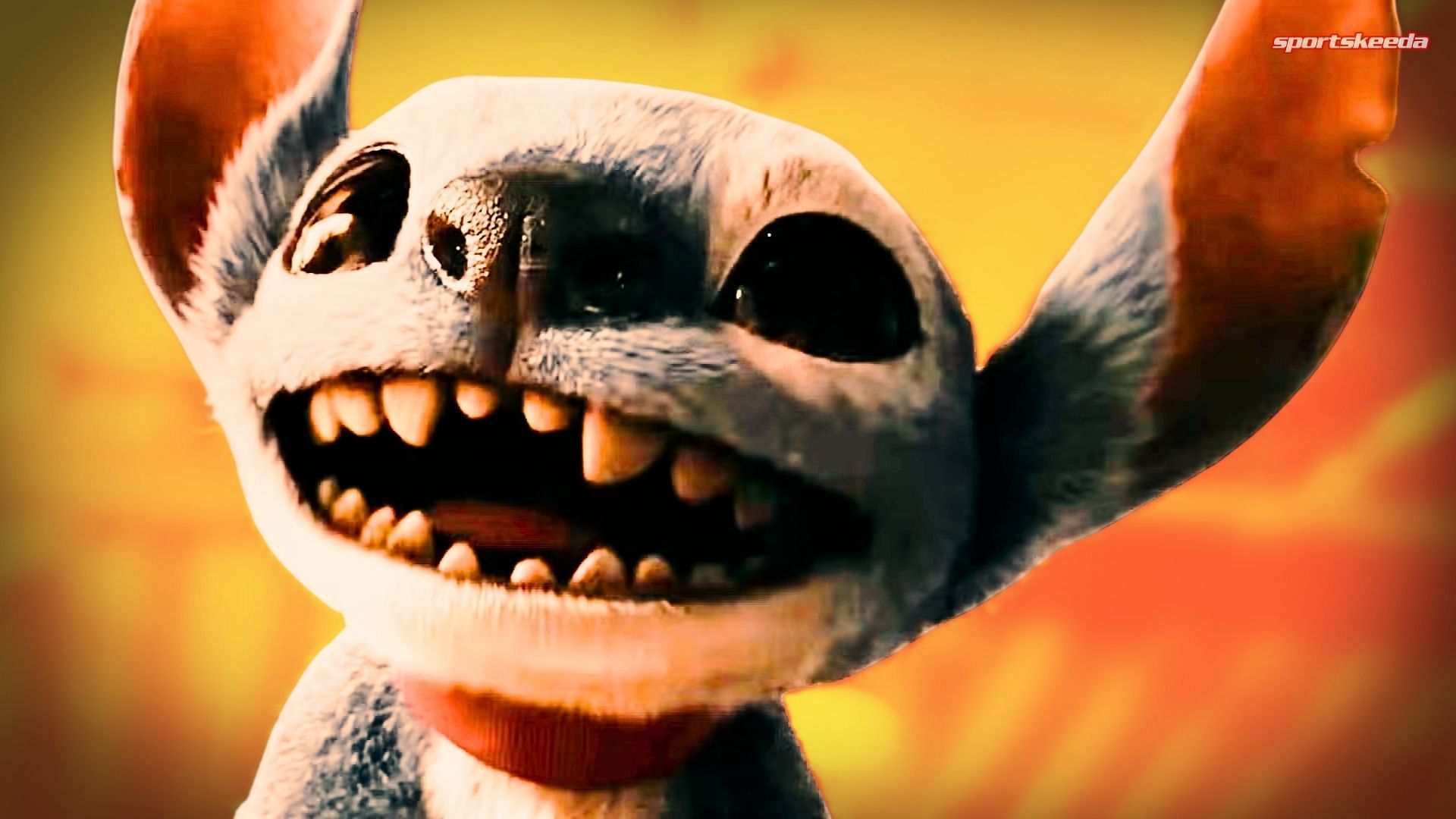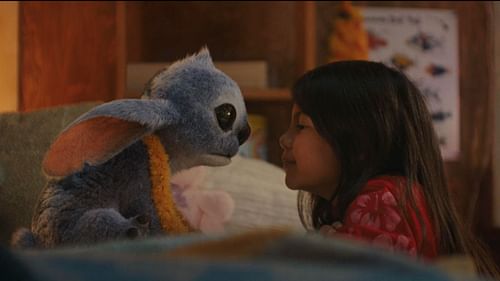Disney’s Live-Action Lilo & Stitch ending explained: Do Lilo and Nani live apart?

Lilo & Stitch, Disney’s 2025 live-action remake of the 2002 animated film, directed by Dean Fleischer Camp, premiered at the El Capitan Theatre in Los Angeles on May 17, 2025, and was released across the United States on May 23, 2025.
It stars Maia Kealoha as Lilo Pelekai in her first movie role, along with Zach Galifianakis as the alien scientist Jumba. The voices are the same as those in the animated movie. People had mixed to positive things to say about the movie, with a lot of focus on how it tells the classic story in a new way for a new generation.
Disclaimer: This article contains major spoilers from Lilo & Stitch. Reader's discretion is advised.
The story is about Lilo, a lively Hawaiian girl who takes in Stitch, a genetically engineered alien experiment that crashed on Earth. To deal with family, friendship, and the aliens who want to catch Stitch, they work together.
People from social services want to take Lilo away from her guardian sister, Nani, which is what the story is about. The remake also shows Nani's personal goals and sacrifices in more depth, giving the story a new emotional level.
In production, the live-action film makes notable changes from the original animated classic. A key change lies in the ending: Lilo and Nani end up living apart but remain close through the help of new characters, marking a shift toward a more modern and grounded interpretation of family.
The film replaces the original’s second villain with Jumba as the main antagonist, who never redeems himself. These alterations give the story fresh complexity and set the stage for potential sequels.
What happened at the end of Disney’s Live-Action Lilo & Stitch

The ending of Lilo & Stitch is a significant departure from the 2002 animated film, introducing a nuanced take on family separation and responsibility. Unlike the original, where Lilo and Nani remain together in their home, the live-action movie portrays a bittersweet resolution where the sisters are physically separated but emotionally close.
The catalyst for this separation stems from the intervention of social services, represented by the kind but firm Mrs. Kekoa, who recognizes that Nani is overwhelmed by the responsibility of caring for six-year-old Lilo.
Nani has sacrificed a full college scholarship in marine biology to raise her sister, but the system insists she must meet specific requirements to maintain guardianship, including stable housing, financial security, and health insurance. This pressure forces Nani to reluctantly agree that Lilo should be placed in foster care temporarily.
Also Read: Disney may soon double down on its failure, and its history is the proof

The movie introduces Tūtū, a kind neighbor and relative of David, Nani's love interest. Tūtū offers to take care of Lilo, giving her a stable home while Nani goes to school. Even though the sisters are far apart, this arrangement helps them stay close. Lilo visits a lot, thanks to Stitch's stolen alien teleporter.
This shows that family is more than just living together; it's about love and connection. The ending makes it clear that taking care of yourself is just as important as taking care of your family, since Nani needs to grow and heal, too.
Meanwhile, Stitch survives a near-death experience underwater after rescuing Lilo from a shipwreck caused by the villainous Jumba, who attempts to capture Stitch to upgrade him into a cold, emotionless experiment. Stitch’s survival, aided by the community and a daring rescue, results in the Grand Councilwoman allowing him to remain on Earth in exile, affirming his place in this new ‘ohana.
Read More: Does Disney's live-action Lilo & Stitch (2025) have a post-credits scene? Explained
The story behind the ending: The full journey of Lilo, Stitch, and Nani

To fully understand the ending, it’s essential to explore the story’s broader context. The movie opens in a distant galaxy where Dr. Jumba Jookiba is put on trial for illegal genetic experiments. Stitch, Experiment 626, is deemed a threat and sentenced to exile. He escapes to Earth, where he crashes on Kauaʻi and meets Lilo Pelekai.
Lilo is a stubborn Hawaiian girl who is having a hard time dealing with the death of her parents and living with her older sister, Nani. Because of their unstable living situations and money problems, a social worker is keeping an eye on the two sisters.
The movie goes into more detail about Nani's sacrifices, like how she gave up college to work at a resort and take care of Lilo. This grounding makes their problems seem more real and important.
When Lilo adopts Stitch, she believes he’s a dog, but soon discovers his alien origins. Stitch’s chaotic behavior leads to problems, including Nani losing her job.
The social worker’s warnings grow more serious, pushing Nani toward relinquishing guardianship for Lilo’s safety. Meanwhile, Jumba and Pleakley pursue Stitch relentlessly, with Jumba never softening as he did in the original film, making him a relentless antagonist.
The tension rises when Jumba captures Stitch and tries to stop him from growing emotionally so that he can do a more dangerous experiment. Because Lilo is brave, she frees Stitch, but after a crash, they are stuck underwater.
Nani's brave rescue almost kills Stitch, but his recovery makes his place in the 'ohana stronger. The story is about sacrifice, loyalty, and emotional connection, and this climax brings those themes home.
Read More: "Capitalism got him too": Internet reacts to Stitch animatronic from Lilo & Stitch scanning tickets in a movie theater
How Jumba’s villainous role shapes the ending

A major difference in the live-action remake’s ending is the characterization of Jumba. In the original animated film, Jumba eventually embraces Earth and joins the found family. However, the live-action version paints Jumba as a purely villainous figure who never redeems himself. This choice increases the stakes in the ending and reinforces the film’s message about the power of emotional bonds.
Jumba’s obsession with capturing Stitch to revert him to a cold, emotionless weapon symbolizes the threat of losing connection and empathy. His refusal to accept the value of “ohana” puts him at odds with Stitch and Lilo’s evolving family. His defeat in the final battle and subsequent re-arrest by the Grand Councilwoman signify the triumph of love and connection over cruelty and control.
The movie doesn't need a second bad guy because Jumba is already the main bad guy. Instead, the conflict is about emotional growth. This also makes it possible for more movies to come after this one, since Jumba says he will keep working on his experiments to make Stitch more dangerous. This possible plot could add to the world while keeping the main theme of family and acceptance.
Also Read: "Funny to me how "live action" now means "mostly cgi"" - Internet reacts as trailer drops for live-action ‘Lilo & Stitch' remake
Family, separation, and Ohana

The ending of Lilo & Stitch live-action extends the original film’s theme of “ohana,” meaning family, to include the complexities of modern life. Rather than keeping the sisters physically together, Lilo & Stitch embraces the reality that family can sometimes mean living apart but remaining emotionally close.
Nani’s choice to focus on her education and personal growth is portrayed not as abandonment but as an act of self-care necessary to be a better guardian. Lilo’s placement with Tūtū allows her a stable home environment, supported by people who love her. This shared guardianship model reflects modern family structures and highlights the importance of community.
The film also adds depth by showing social workers like Mrs. Kekoa as sympathetic figures, not villains. They care about the children’s well-being, adding realism to the story. Meanwhile, characters like David, Tūtū, Pleakley, and even Agent Bubbles, a grounded CIA agent in this version, create an extended support network, reinforcing the idea that family can be found and made, not just inherited.
In the end, the ending makes it clear that "no one gets left behind" applies to both family and oneself. The sisters' love for each other stays strong even though they live apart. Stitch's place in their 'ohana is safe, which shows that family is more than just living under the same roof; it's about caring for each other, being connected, and being loyal.
Also Read: Snow White premiere scaled down media intervention before its release on March 21, 2025
Stay tuned for more updates on Disney’s Live-Action Lilo & Stitch and similar projects as the year progresses.




